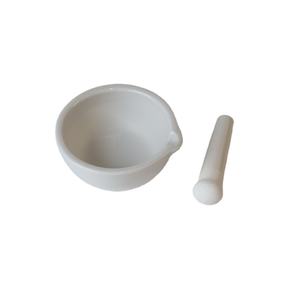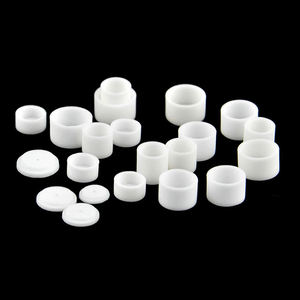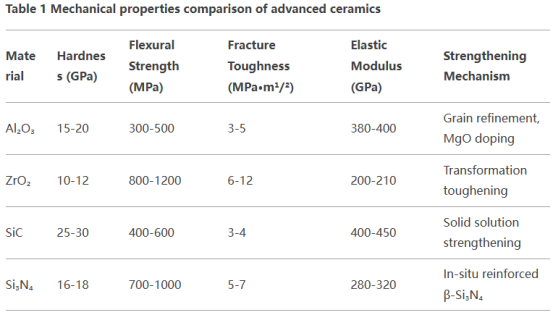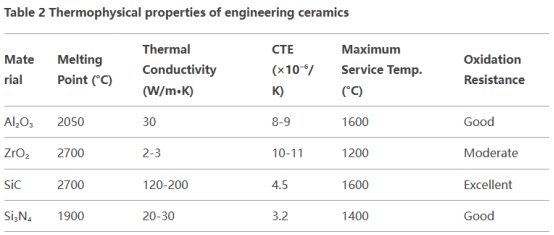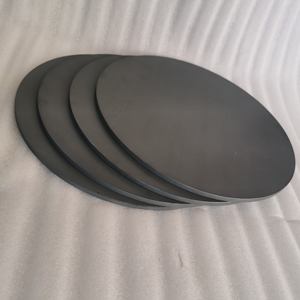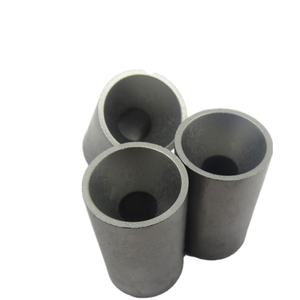Material Introduction
Advanced structural porcelains, as a result of their unique crystal framework and chemical bond attributes, reveal performance advantages that metals and polymer products can not match in extreme atmospheres. Alumina (Al Two O FOUR), zirconium oxide (ZrO TWO), silicon carbide (SiC) and silicon nitride (Si five N FOUR) are the four major mainstream design ceramics, and there are essential differences in their microstructures: Al ₂ O five comes from the hexagonal crystal system and depends on strong ionic bonds; ZrO ₂ has three crystal forms: monoclinic (m), tetragonal (t) and cubic (c), and obtains special mechanical residential properties through phase modification toughening device; SiC and Si Five N four are non-oxide porcelains with covalent bonds as the major element, and have more powerful chemical stability. These architectural distinctions directly lead to considerable distinctions in the prep work procedure, physical homes and engineering applications of the 4. This short article will systematically evaluate the preparation-structure-performance partnership of these 4 ceramics from the point of view of products scientific research, and explore their leads for industrial application.
(Alumina Ceramic)
Preparation procedure and microstructure control
In regards to preparation process, the four ceramics show apparent distinctions in technological paths. Alumina porcelains use a relatively standard sintering procedure, typically utilizing α-Al two O four powder with a purity of greater than 99.5%, and sintering at 1600-1800 ° C after completely dry pressing. The trick to its microstructure control is to inhibit unusual grain growth, and 0.1-0.5 wt% MgO is usually included as a grain border diffusion inhibitor. Zirconia ceramics require to introduce stabilizers such as 3mol% Y TWO O two to retain the metastable tetragonal phase (t-ZrO ₂), and use low-temperature sintering at 1450-1550 ° C to avoid excessive grain growth. The core procedure obstacle hinges on properly regulating the t → m phase transition temperature home window (Ms point). Considering that silicon carbide has a covalent bond proportion of as much as 88%, solid-state sintering requires a heat of greater than 2100 ° C and relies upon sintering help such as B-C-Al to develop a fluid phase. The response sintering method (RBSC) can accomplish densification at 1400 ° C by infiltrating Si+C preforms with silicon melt, however 5-15% cost-free Si will certainly continue to be. The prep work of silicon nitride is one of the most intricate, typically using GPS (gas stress sintering) or HIP (warm isostatic pushing) procedures, adding Y ₂ O SIX-Al ₂ O two series sintering aids to form an intercrystalline glass phase, and heat treatment after sintering to take shape the glass stage can considerably enhance high-temperature efficiency.
( Zirconia Ceramic)
Contrast of mechanical properties and reinforcing system
Mechanical residential or commercial properties are the core examination signs of structural porcelains. The four types of materials show totally various conditioning devices:
( Mechanical properties comparison of advanced ceramics)
Alumina primarily counts on fine grain fortifying. When the grain size is minimized from 10μm to 1μm, the toughness can be boosted by 2-3 times. The excellent toughness of zirconia originates from the stress-induced phase change system. The stress and anxiety field at the fracture tip activates the t → m phase transformation come with by a 4% quantity growth, causing a compressive stress shielding impact. Silicon carbide can improve the grain border bonding strength with strong option of aspects such as Al-N-B, while the rod-shaped β-Si five N four grains of silicon nitride can generate a pull-out impact comparable to fiber toughening. Crack deflection and connecting add to the improvement of sturdiness. It is worth noting that by constructing multiphase ceramics such as ZrO ₂-Si Six N Four or SiC-Al Two O ₃, a range of strengthening systems can be coordinated to make KIC exceed 15MPa · m ¹/ TWO.
Thermophysical buildings and high-temperature actions
High-temperature security is the crucial benefit of architectural porcelains that identifies them from conventional products:
(Thermophysical properties of engineering ceramics)
Silicon carbide shows the best thermal administration efficiency, with a thermal conductivity of approximately 170W/m · K(similar to light weight aluminum alloy), which is because of its easy Si-C tetrahedral structure and high phonon breeding price. The low thermal development coefficient of silicon nitride (3.2 × 10 ⁻⁶/ K) makes it have outstanding thermal shock resistance, and the crucial ΔT worth can reach 800 ° C, which is particularly ideal for duplicated thermal biking atmospheres. Although zirconium oxide has the greatest melting point, the conditioning of the grain border glass phase at high temperature will certainly create a sharp decrease in strength. By adopting nano-composite technology, it can be increased to 1500 ° C and still maintain 500MPa strength. Alumina will certainly experience grain boundary slip above 1000 ° C, and the enhancement of nano ZrO two can create a pinning impact to hinder high-temperature creep.
Chemical stability and corrosion habits
In a corrosive setting, the 4 sorts of porcelains exhibit substantially different failure systems. Alumina will certainly dissolve on the surface in solid acid (pH <2) and strong alkali (pH > 12) services, and the corrosion rate boosts significantly with increasing temperature level, reaching 1mm/year in boiling focused hydrochloric acid. Zirconia has great tolerance to inorganic acids, however will go through reduced temperature level deterioration (LTD) in water vapor atmospheres above 300 ° C, and the t → m phase transition will lead to the formation of a microscopic split network. The SiO two safety layer formed on the surface area of silicon carbide offers it superb oxidation resistance listed below 1200 ° C, but soluble silicates will certainly be created in molten antacids metal environments. The rust habits of silicon nitride is anisotropic, and the corrosion rate along the c-axis is 3-5 times that of the a-axis. NH Four and Si(OH)four will be created in high-temperature and high-pressure water vapor, causing product cleavage. By optimizing the make-up, such as preparing O’-SiAlON ceramics, the alkali corrosion resistance can be increased by greater than 10 times.
( Silicon Carbide Disc)
Regular Engineering Applications and Case Research
In the aerospace field, NASA uses reaction-sintered SiC for the leading side components of the X-43A hypersonic airplane, which can endure 1700 ° C wind resistant heating. GE Air travel uses HIP-Si three N four to produce turbine rotor blades, which is 60% lighter than nickel-based alloys and enables greater operating temperature levels. In the clinical area, the fracture toughness of 3Y-TZP zirconia all-ceramic crowns has actually gotten to 1400MPa, and the service life can be encompassed more than 15 years with surface gradient nano-processing. In the semiconductor industry, high-purity Al two O four ceramics (99.99%) are used as dental caries products for wafer etching tools, and the plasma corrosion price is <0.1μm/hour. The SiC-Al₂O₃ composite armor developed by Kyocera in Japan can achieve a V50 ballistic limit of 1800m/s, which is 30% thinner than traditional Al₂O₃ armor.
Technical challenges and development trends
The main technical bottlenecks currently faced include: long-term aging of zirconia (strength decay of 30-50% after 10 years), sintering deformation control of large-size SiC ceramics (warpage of > 500mm elements < 0.1 mm ), and high manufacturing cost of silicon nitride(aerospace-grade HIP-Si six N ₄ gets to $ 2000/kg). The frontier development directions are concentrated on: one Bionic structure design(such as covering split framework to boost strength by 5 times); two Ultra-high temperature sintering technology( such as stimulate plasma sintering can achieve densification within 10 mins); five Smart self-healing porcelains (containing low-temperature eutectic phase can self-heal splits at 800 ° C); four Additive production technology (photocuring 3D printing precision has actually reached ± 25μm).
( Silicon Nitride Ceramics Tube)
Future development trends
In a comprehensive contrast, alumina will still control the traditional ceramic market with its cost benefit, zirconia is irreplaceable in the biomedical area, silicon carbide is the favored material for severe environments, and silicon nitride has great possible in the field of high-end equipment. In the next 5-10 years, through the integration of multi-scale architectural policy and intelligent manufacturing modern technology, the efficiency borders of engineering ceramics are anticipated to achieve new breakthroughs: for example, the style of nano-layered SiC/C porcelains can accomplish strength of 15MPa · m ONE/ TWO, and the thermal conductivity of graphene-modified Al two O five can be raised to 65W/m · K. With the improvement of the “dual carbon” technique, the application range of these high-performance porcelains in new energy (gas cell diaphragms, hydrogen storage materials), environment-friendly production (wear-resistant parts life enhanced by 3-5 times) and other fields is expected to maintain an ordinary annual development rate of more than 12%.
Supplier
Advanced Ceramics founded on October 17, 2012, is a high-tech enterprise committed to the research and development, production, processing, sales and technical services of ceramic relative materials and products. Our products includes but not limited to Boron Carbide Ceramic Products, Boron Nitride Ceramic Products, Silicon Carbide Ceramic Products, Silicon Nitride Ceramic Products, Zirconium Dioxide Ceramic Products, etc. If you are interested in translucent alumina, please feel free to contact us.(nanotrun@yahoo.com)
All articles and pictures are from the Internet. If there are any copyright issues, please contact us in time to delete.
Inquiry us
